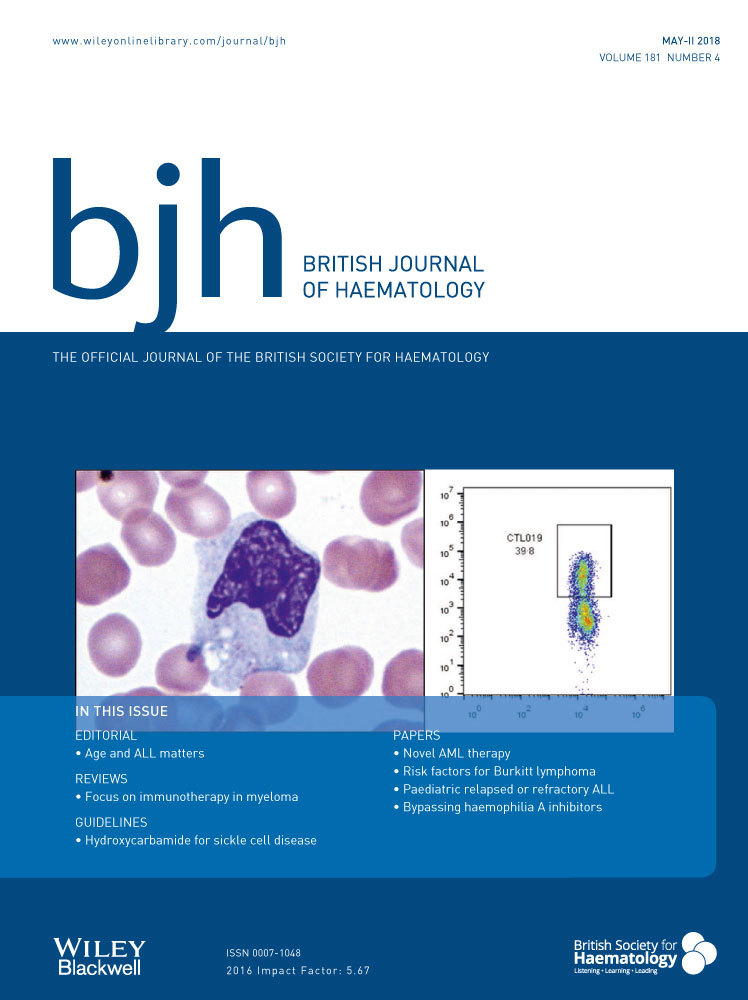Quality assurance and tests of platelet function
The United Kingdom Accreditation Service (UKAS) is currently managing the transition of Clinical Pathology Accredited (CPA) laboratory service to International Organisation for Standardization (ISO) 15189, an internationally recognised standard (ISO, 2012) which specifies the requirements for quality and competence in laboratories. It is expected that UK laboratories providing haemostasis tests will seek UKAS accreditation to ISO standards for the range of tests that are employed in their routine practice.
One criterion for ISO 15189 accreditation is participation in inter-laboratory comparison programme(s)(ILC), such as external quality assessment (EQA) programmes or proficiency testing (PT) programmes (ISO, 2012). Further advice is provided in Technical Policy Statement (TPS) 47, the UKAS policy on participation in proficiency testing (UKAS, 2016).
However, for some haemostasis tests it is difficult to comply with these requirements. One area in which laboratories will face difficulties in performing EQA or ILC is platelet function testing. This is because there is a relatively narrow window of time after blood samples are taken before platelet function is compromised (Harrison et al, 2011) and, in contrast to other haemostasis parameters, it is not possible to stabilise this by separating and freezing samples. Lyophilisation is also not currently an option, and consequently EQA is not available for these tests. The requirement for fresh samples also restricts availability of abnormal internal quality controls (IQC).
Where no appropriate PT or ILC is available, ISO 15189 states “the laboratory shall develop other approaches and provide objective evidence for determining the acceptability of examination results,” (ISO, 2012) whilst TPS 47 states “laboratories and inspection bodies are required to demonstrate the on-going validity of their tests by other means (use of reference materials, replicate testing, etc.)” (UKAS, 2016). Suggestions are made for approaches to this, but the instability of platelets in vitro precludes many options for quality control. Moreover, because these tests are performed in many haemostasis laboratories it is preferable to reach an agreed consensus on a standardised approach to validation rather than individual laboratories and individual assessors developing or applying their own.
The Haemostasis and Thrombosis Task Force of the British Society for Haematology (BSH) and UK NEQAS for Blood Coagulation have therefore sought to define an approach that could be generally adopted to ensure confidence in the results obtained in platelet function testing in the absence of PT and ILC. This may aid accreditation bodies and their assessors when platelet function is included in the test repertoire submitted for possible accreditation where a consistent approach to accreditation is required.
- Laboratory procedures should be consistent with recommendations in the BSH guidelines.
- A method should be employed that has been demonstrated to give abnormal results in patients with known platelet defects.
- Internal Quality Control: laboratories should run a fresh sample from a donor expected to give a normal aggregation pattern for each new lot of reagents and whenever an abnormal aggregation pattern is seen in a patient. Each set of investigations should include at least one normal aggregation trace for each agonist.
- Repeat testing should be performed for any unexpected abnormal results on a fresh sample taken on a separate day, to avoid making a confirmed diagnosis on a single result.
- If reporting a quantitative measure of aggregation, for example maximal aggregation or aggregation slope, rather than a purely subjective visual assessment of the aggregation curve, reference ranges should be established.
- BSH guidelines allow for subjective assessment of aggregation curves, but recommend that the individuals assessing the curves are experienced in doing so. Individuals should therefore be able to demonstrate competency in interpreting aggregation curves and post-analytical EQA may be helpful in this respect. If appropriate EQA for interpretation of platelet function testing data becomes available, individuals should be enrolled in such a programme to maintain competency. UK NEQAS is currently considering introducing such a scheme.
- Splitting a sample from a donor between two sites is an option in cases where the sites are geographically close enough for samples to be tested within the required timescale. This can provide an additional form of quality control, but is not possible for some laboratories and so should not be regarded as essential. This approach requires careful monitoring of sample storage conditions prior to testing. Laboratories taking this approach would need to define what “acceptable” agreement between the sites is and what action to take if this agreement was not achieved. Moreover, similar reagents and aggregometers should be employed to allow comparability, and split sample testing should not be a mandatory component of platelet aggregometry quality control for accreditation.
Although assessment against ISO standards is ultimately a matter for accreditation bodies, this correspondence is aimed at assisting laboratories comply with some aspects of ISO standards and we consider that centres adopting these approaches to quality control of platelet function testing should fulfil some of the requirements for accreditation against ISO 15189.




